History of the Power Drill: A Beginner’s Guide to a Popular Tool
As Pros, there aren’t a ton of people in our office asking, “what is a drill?” But if you’re new to the world of power tools or just a fan, the history of the power drill might prove fascinating. Regardless of why you’re here, who better to explain it than guys and gals who use them every day? Rather than write a term paper-length article, we promise to stay focused on the key points.
Mục Lục
What is a Drill? The Textbook Definition
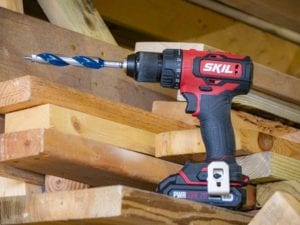
Merriam-Webster defines a drill in different ways. We’re not talking military drills or the act of drilling, we’re talking tools. They define it as:
“An instrument with an edged or pointed end for making holes in hard substances by revolving or a succession of blows.”
Fundamentally, that’s dead on. A drill has some sort of point or edge (a drill bit) that turns. In most cases, it shaves away material to create a hole, but it can also chip through or use a combination of the two.
It’s also a very wide definition. Drills can be small enough to make near-microscopic holes or large enough to dig a tunnel under the English Channel.
Quick History of the Power Drill
Curious about the real history of the power drill? We were too. Of course, it all depends on what period of history you’re looking at. Historians estimate humans figured out how to rotate a pointed stone against another object to make a hole thousands of years ago.
A little more than 200 years ago, we see the first picture of what hand drills looked like. You had the bit and brace (still in use today) as well as a beater-style hand drill. The specific invention dates of these tools remain up for debate.
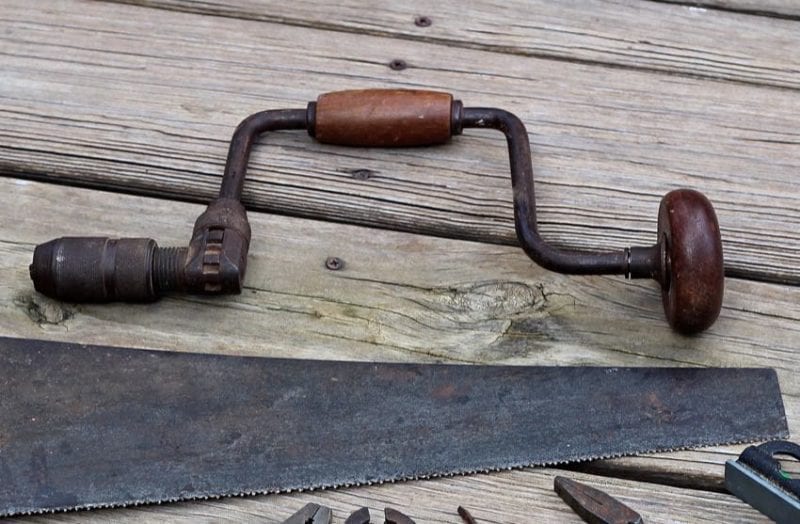 bit and brace drill
bit and brace drill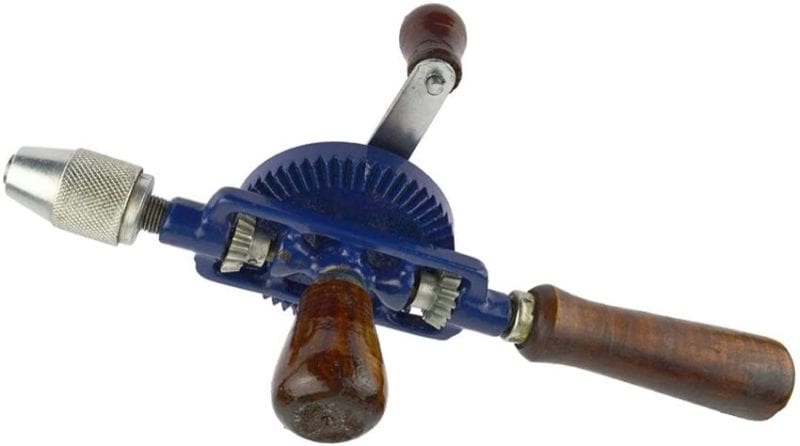 egg-beater drill
egg-beater drill
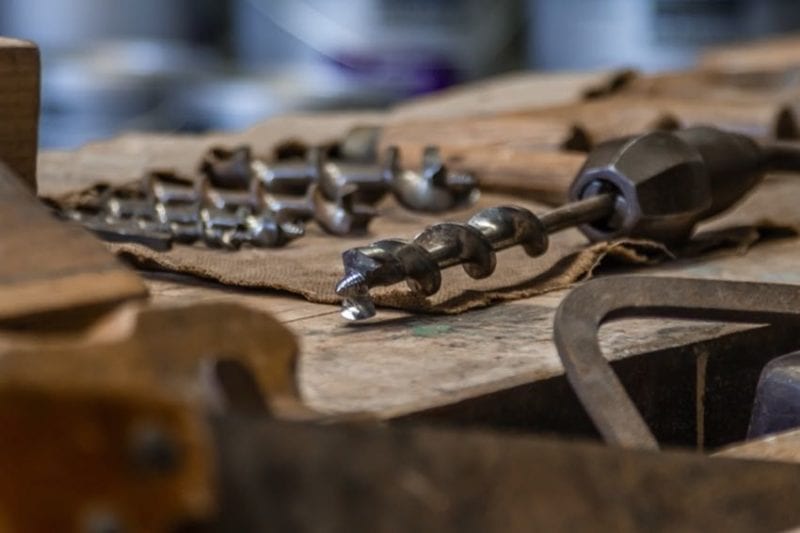
When it comes to adding electricity, Arthur James Arnot and William Blanch Brain of Australia get credit for inventing the first electric power drill way back in 1889. Check out the patent filing which shows how they created a shield to protect the user from sparks emanating from the motor compartment.
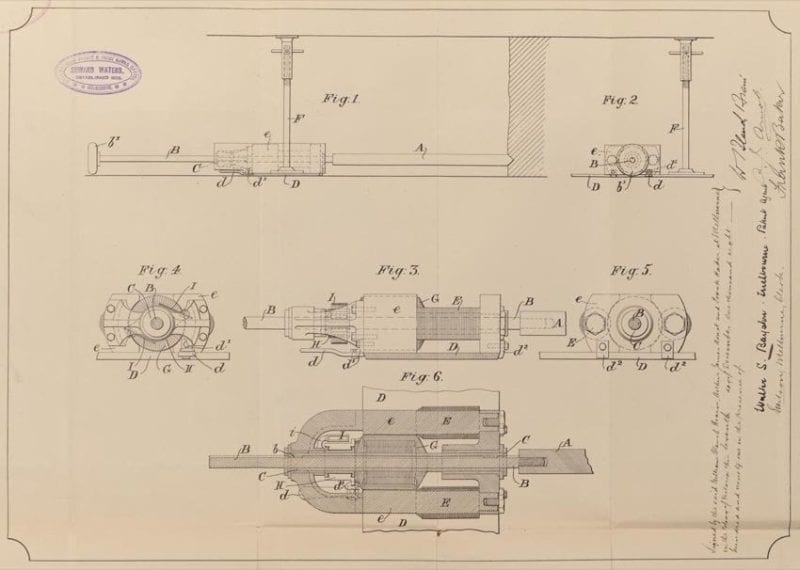 Image from Arnot’s patent filing for an electric drill. (Image courtesy of the collection of the National Archives of Australia)
Image from Arnot’s patent filing for an electric drill. (Image courtesy of the collection of the National Archives of Australia)
The first portable handheld drill, however, came from the minds of Wilhelm and Carl Fein in Stuttgart, Germany in 1895. Yes, the very same Feins whose company dominates the best oscillating multi-tool market today.
In 1917, Black & Decker (now Stanley Black & Decker) patented what we might call the “modern drill” with a pistol grip style and trigger. They actually based it off a Colt Peacemaker that was sitting on a table nearby. Talk about having an epiphany! This changed the history of the power drill forever.
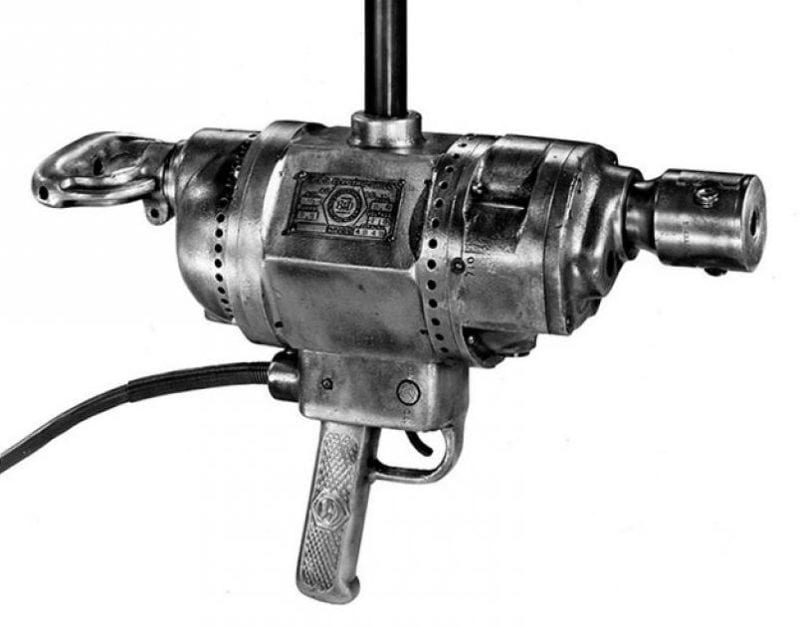 Courtesy of http://bdiluminacao.com.br/
Courtesy of http://bdiluminacao.com.br/
The first cordless drill made its appearance in 1961. Black & Decker used a nickel-cadmium battery to power it.
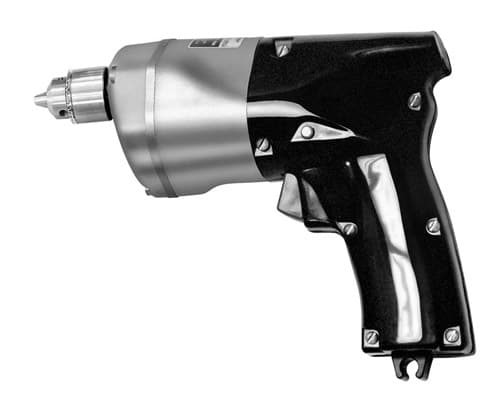
Tools with removable batteries would come several years later in 1978 when Makita issued the 6010D, a cordless drill powered by a removable 7.2V NiCd battery pack.
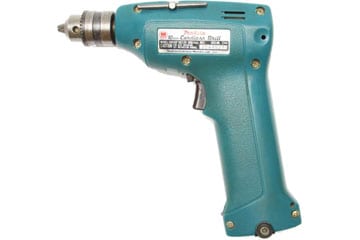
Modern Day Cordless Drills
When most people think of drills, they think of the pistol grip type that Black & Decker invented with either a corded or battery power source. That legacy paved the way for modern drills that, today, sport the same basic design. Power supplies have migrated to battery power, and motors have dropped in size while increasing their efficiency.
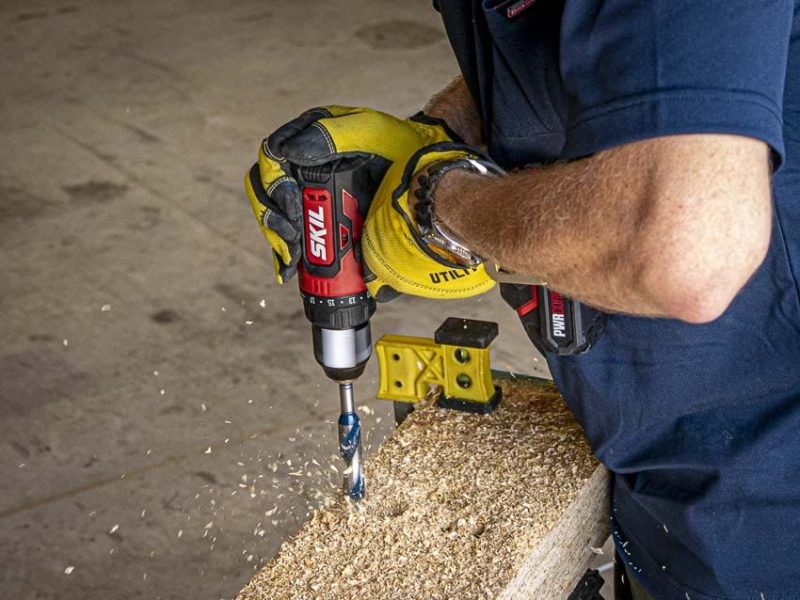
In either case, an electric motor turns the chuck, which holds a drill or driver bit. The rotation allows a drill bit to slice material away or a driver bit to install/remove a fastener. In case it comes up on Final Jeopardy, most of the “drills” we use today are actually drill drivers since they can both drill holes and drive fasteners.
Check out our article on brushed vs brushless motors for more information.
Where the History of the Power Drill Has Led Us
Even though the most popular drills are the handheld type we use for general drilling and fastening, many other types exist. No matter what you need to make a hole in, chances are there’s a drill for that. Here’s a pretty good list to start with:
- Drill Press
- Core Drill
- Hammer Drill
- Rotary Hammer Drill
- Magnetic Drill
- Ground Auger
Did this get you the information you needed? Got any more feedback or information that we missed? If so, please leave it in the comments below.















![Toni Kroos là ai? [ sự thật về tiểu sử đầy đủ Toni Kroos ]](https://evbn.org/wp-content/uploads/New-Project-6635-1671934592.jpg)


